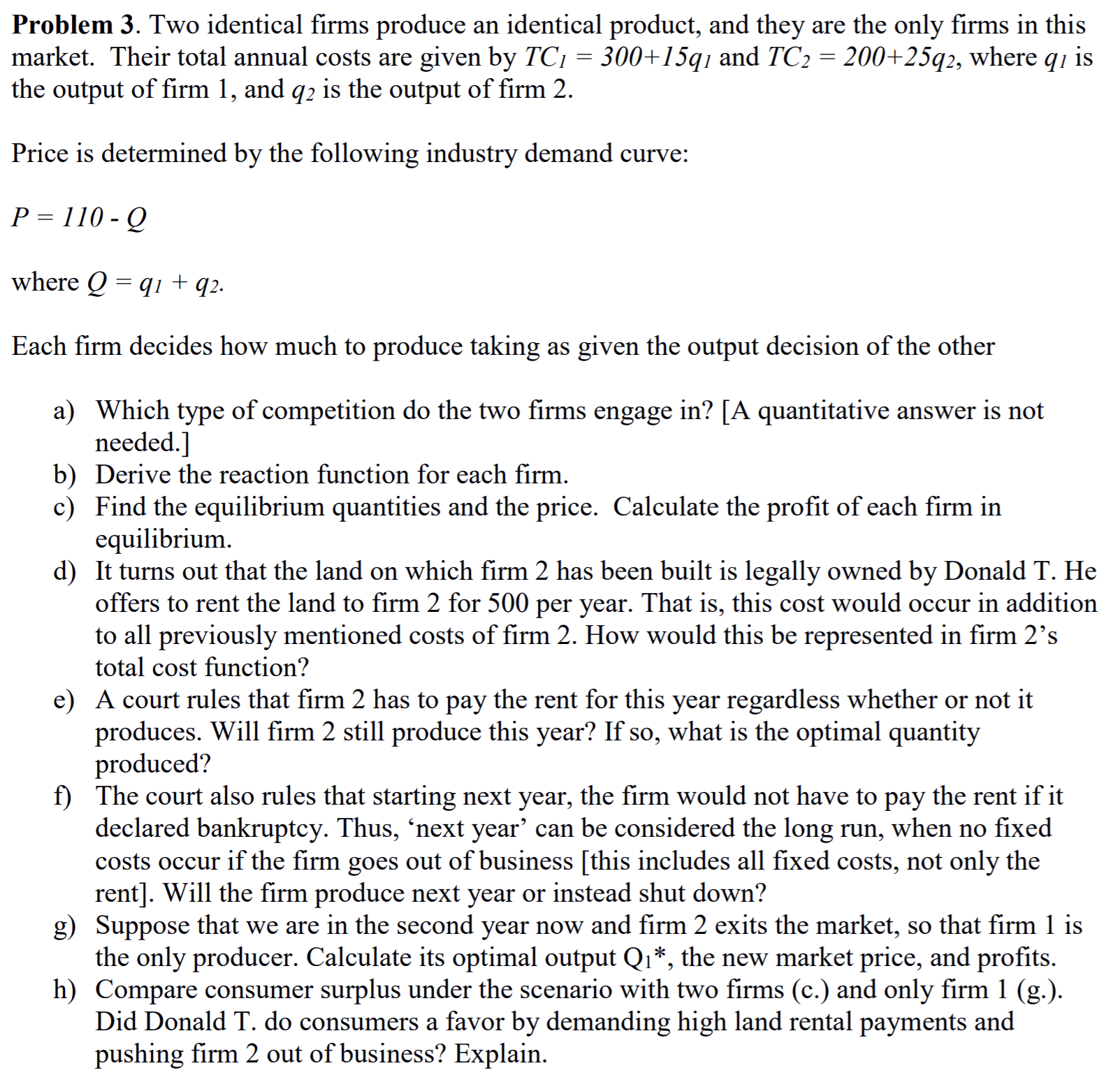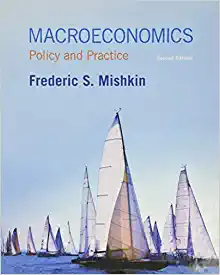

Econ homework
Problem 3. Two identical rms produce an identical product, and they are the only rms in this market. Their total annual costs are given by T C 1 = 3 00+] 5q1 and T C2 = 200+25q2, where q; is the output of rm 1, and qg is the output of rm 2. Price is determined by the following industry demand curve: P = 110 - Q where Q = q1 + 12. Each rm decides how much to produce taking as given the output decision of the other a) Which type of competition do the two rms engage in? [A quantitative answer is not needed] b) Derive the reaction function for each rm. 0) Find the equilibrium quantities and the price. Calculate the prot of each rm in equilibrium. d) It turns out that the land on which rm 2 has been built is legally owned by Donald T. He offers to rent the land to rm 2 for 500 per year. That is, this cost would occur in addition to all previously mentioned costs of rm 2. How would this be represented in rm 2's total cost function? e) A court rules that rm 2 has to pay the rent for this year regardless whether or not it produces. Will rm 2 still produce this year? If so, what is the optimal quantity produced? f) The court also rules that starting next year, the rm would not have to pay the rent if it declared bankruptcy. Thus, 'next year' can be considered the long run, when no xed costs occur if the rm goes out of business [this includes all xed costs, not only the rent]. Will the rm produce next year or instead shut down? g) Suppose that we are in the second year now and rm 2 exits the market, so that rm 1 is the only producer. Calculate its optimal output Q1*, the new market price, and prots. h) Compare consumer surplus under the scenario with two rms (c.) and only rm 1 (g). Did Donald T. do consumers a favor by demanding high land rental payments and pushing rm 2 out of business? Explain. i) j) k) Assume Donald T. had no other use or way to extract value from the land except for renting it to rm 2. How much land rent should Donald T. have asked for in order to maximize his gains? Explain. Let's go back to the initial setup (i.e., the problem described before question a.) Suppose that the two rms compete by setting prices. How is this competition called, and what is the most likely outcome (market price and total quantity produced)? [assume there's no collusion] [OPTIONAL, FOR PRACTICE NO POINTS AWARDED] Check if the price that you found under j. is optimal from rm 1's perspective, or if it may want to charge an even lower price. [Hintz Given that rm 1 is the only player left in the market, what is the monopolist's optimal price? Is it below the price that rm 1 charges in j.? ]










